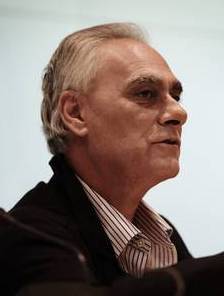
(Photo handout to Daily News Egypt)
The Housing and Development Bank’s rate of loans provided to customers investing in the real estate sector is about 7.2% of the total loans portfolio allocated to the corporate sector and institutions, according to Ashraf El-Bassiouny, Managing Director’s Assistant for Marketing and Retail Banking.
Daily News Egypt talked to El-Bassiouny about the bank’s contributions in developing the real estate sector in tourism activities.
What are the services offered by the bank and contributions to companies in real estate and tourism activities?
The Housing and Development Bank’s contributions in financing tourism activity amounted to EGP 150m until the end of 2014. The fund was directed to finance capital expenditures for some hotel and tourism projects, in addition to the most important cities such as Sharm El-Sheikh and Marsa Alam. The bank’s contributions diversified in the tourism investment sector, such as providing funding represented in loans and facilities provided for senior developers to complete the tourist investment projects in building hotels, tourist resorts and hotels units. In addition to other private activities in the tourism sector, like establishing companies serving real estate sector in general, which include tourism investment activity. The most recent companies were established are El Tameer Company for Real Estate Investment and Development and Holding Company for Investment and Development.
What are the loans allocated by the bank to lend to real estate companies’ work in tourist activity?
The rate of loans provided to the customers investing in real estate sector is about 7.2% of the total loans portfolio allocated to the corporate sector.
What is the size of loans return on real estate companies in the tourism activity?
The amount of return calculated on the facilities granted to tourism activities clients vary from client to client, according to more than one standard, including the level of creditworthiness resulting from the study of the client’s request. In addition this is other considerations, such as the required period of loan, in addition to the directed purpose of funding in terms of being dedicated to fund investment costs or operating expenses pertaining to these projects. Usually, these projects are financed in syndicated loans in coordination with other banks or syndications or directly through our bank.
What are the problems facing the bank in providing financial services to the tourism sector?
The problems that the bank, or other banks, may face in the provision of financial services to this sector are temporary problems associated with political and economic recent conditions. These conditions affected the performance of various sectors of the economy, and perhaps the most important of these is the inability of some projects to be bound by the payment period. In addition to this, there are other related problems such as the successive increases in prices of construction materials, besides, downturn in tourism occupancy rate.
What are the incentives could be offered by the bank for companies with tourism investments?
The banks do not provide much funding for tourism real estate investment activities, which require long-term financing with high amounts of money. Furthermore, the real estate tourism sector involved with the construction sector at the highest default rates for the credit-funded banks clients. Meanwhile, there are many positive indicators that encourage banks to finance this sector, especially the return of security and the government tendency to support the tourism sector this year, which was reflected in the expectations of tourism revenues the national budget in the current financial year. Our bank also supported the Central Bank of Egypt’s (CBE) efforts on tourism projects loaned from banks through supporting the initiative that have already been announced by the CBE to support this sector. The initiative aims to encourage banks to support its customers through either lengthening repayment periods or reducing the returns on debt and other procedures, which we believe that this initiative has come at an appropriate timing completely especially in light of the economic and security implications that followed the January 2011 events.
What activities to be provided by the bank to strengthen this sector after the Economic Summit?
The bank will seek, in the coming months, to study many of the projects that were announced in the Economic Summit in Sharm El-Sheikh. This is especially as the tourism sector has received a good share of the investments during the period of the conference. The most important are signing of the contracts for projects aimed at creating integrated tourist areas of commercial, entertaining or therapeutic and banks are studying the best way for participating in financing these projects.
How does the bank see Egypt’s tourism sector?
There is no doubt that the activity of real estate investment in tourism comes at the forefront of the bank’s activities as part of the real estate system, which is one of the core purposes for which the bank was established. The bank has extensive experience in real estate investment and the tourism field, which has spanned for more than 35 years. The tourism sector is one of the most important sources of national income and supports cash reserves of the State, where the sector is working “in parallel” with Suez Canal in increasing the toll of state resources from foreign exchange. Tourism accounts for 15% of foreign exchange sources, in spite of security conditions and the number of countries to ban its citizens travel to Egypt, but the indicators shows an increase in the growth rates of the sector during the fiscal year 2014/2015.



